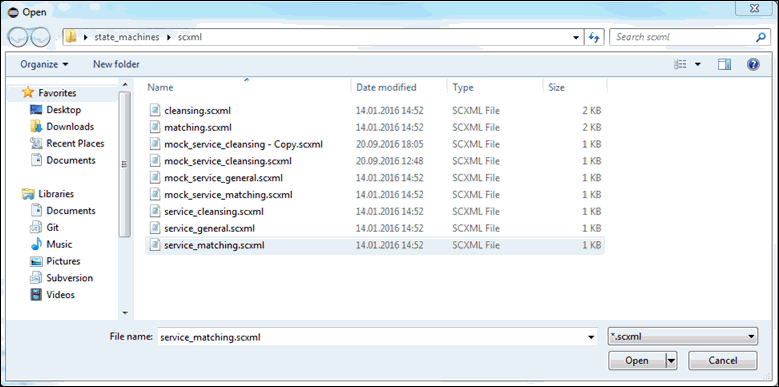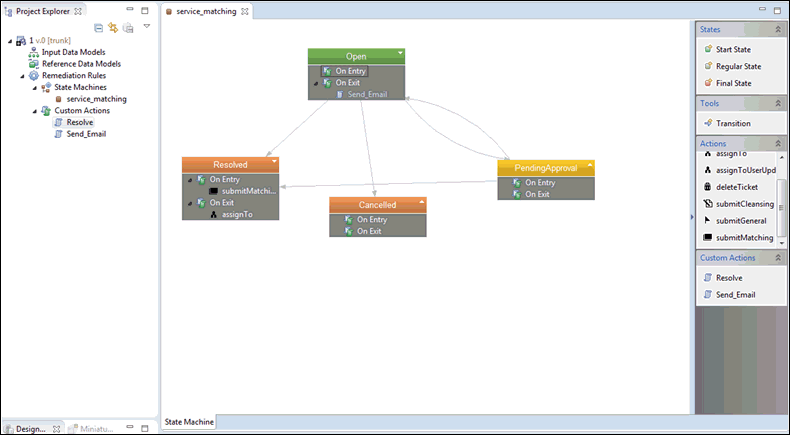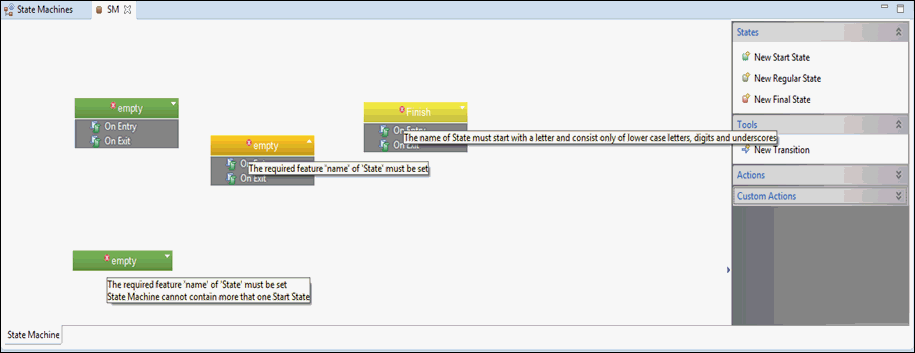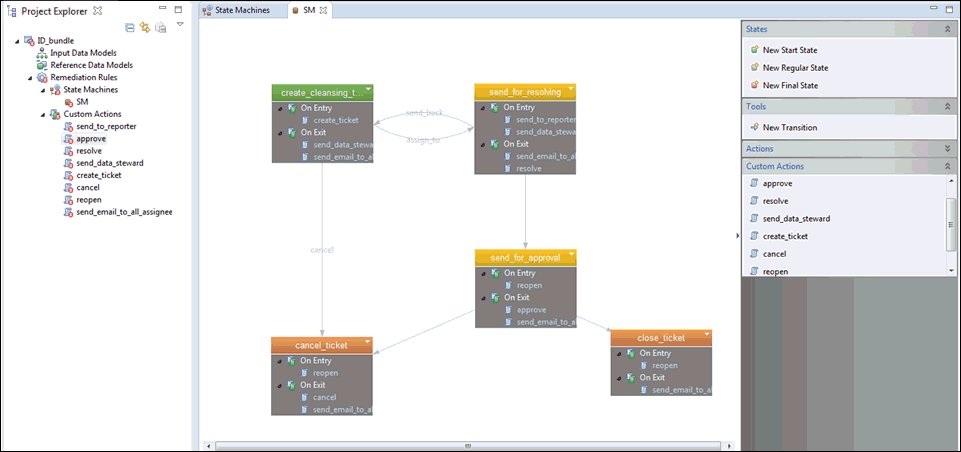Importing State Machines
Importing State Machines can be performed from .SCXML files. To do so, right-click on the State Machines node in the Project Explorer and select Import State Machine from the context menu.

After importing, you will be able to work with imported State Machines in the State machine editor, as shown in the following image.

In the editor above, you can create states which will have the following parameters:
- Name
- Type
There are three types of states:
- Starting
- Regular
- Final
There can only be one starting state, but you can have multiple regular and final states.
You can also add Transitions which will have the following parameters:
- Name
- Options (Event/Type)
- Condition (some script)
The parameters above should appear on the graph. Conditions are shown as tooltips when the pointer hovers over the transition curve.
You can edit the parameters of states and transitions. Transitions from one state cannot point to the same state. However, you cannot import states or transitions from the Data Storage or the App Store.
Rules become invalid if there is any state without a transition or a transition without a target (state).
Invalid States and Transitions are marked with Validation popup statements in the workbench, as shown in the following image.

Tooltips with corresponding errors are displayed, as shown in the following image.

States can have the following groups of actions displayed as a tree:
- On Entry
- On Exit
Images for actions are displayed as action icons. The label for project actions have different colors than actions from the server. Each action contains a Delete option in the context menu.
You can also switch between State types. The option to switch is available from the State context menu by right-clicking on the workbench and selecting Switch Type, as shown in the following image.

The State Type can also by selected in the Type tab when viewing Properties, as shown in the following image.

You can drag and drop State Machines to change their position. Changed positions of states should be saved and displayed after reopening, importing, or exporting.
Clicking on the Refresh Graph Layout button in the Eclipse toolbar refreshes the graph and relocates all states to the default position.